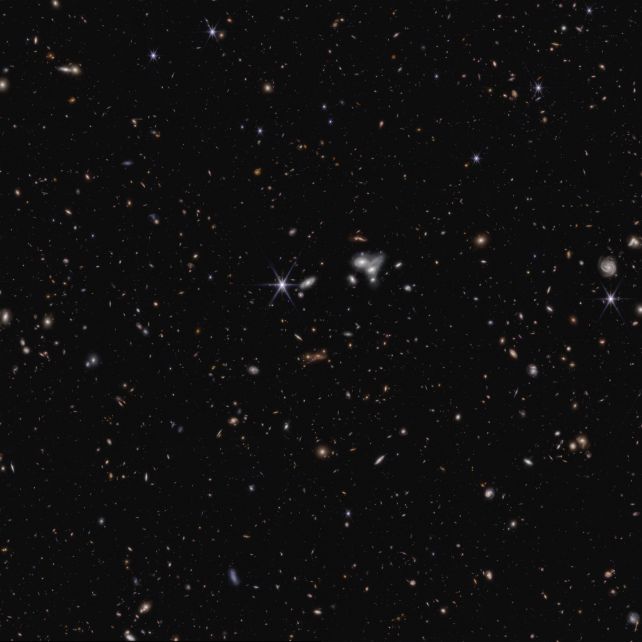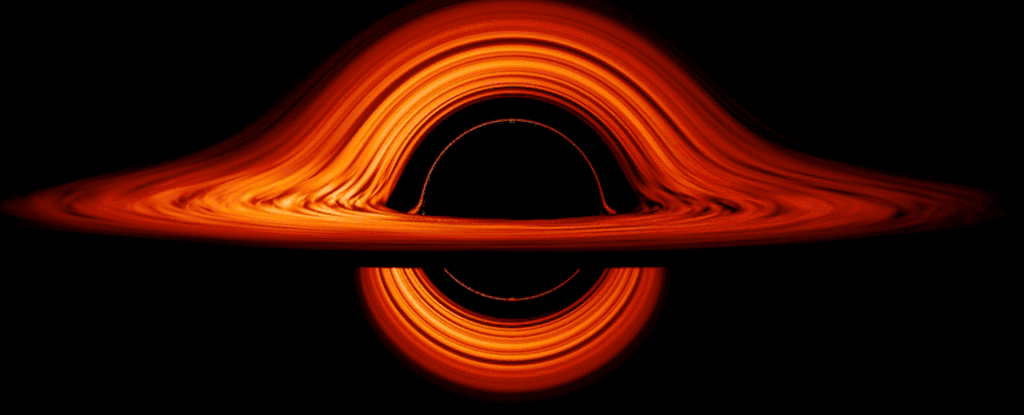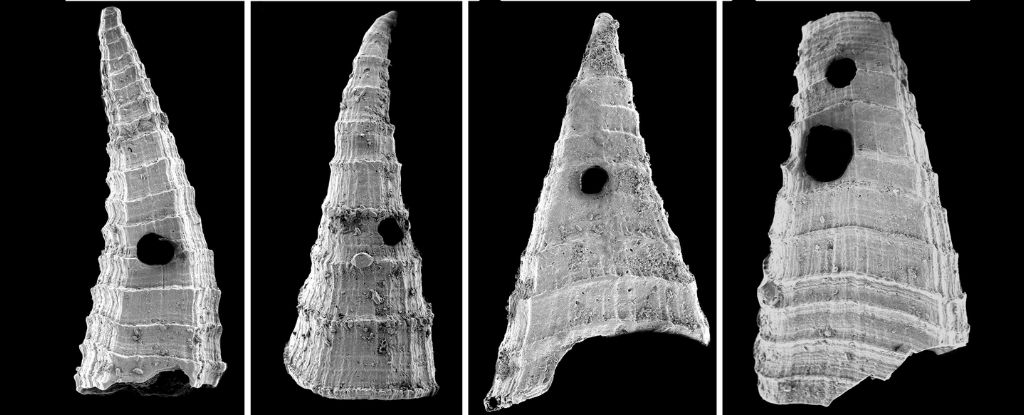An object lurking in the misty dawn of the universe has given astronomers a big surprise.
Observations collected with the James Webb Space Telescope have revealed one active supermassive black hole 9 million times the mass of the Sun — a mass that is actively growing as it sucks matter from the space around it.
Only about 570 million years after the Big Bang, this is the earliest growing supermassive black hole discovered so far, although scientists hope it won’t hold the record for long.
The black hole was found inside one of the earliest galaxies ever discovered, formerly known as EGSY8p7 and has since been renamed CEERS 1019. Its discovery could help solve one of the greatest mysteries of the early universe: how the black holes of the cosmic dawn grew so large in such a short time.
An article detailing the discovery, led by astrophysicist Rebecca Larson of the University of Texas at Austin, appears in a special issue of The Astrophysical Journal.
“We have found the most distant active galactic nucleus (AGN) and the most distant, earliest black hole we have ever found,” Larson told ScienceAlert.
Larson was initially She views CEERS 1019 as part of her work studying the light produced by star formation in the very early Universe.
This light, called Lyman Alpha EmissionIt is thought to arise from the ionization of neutral hydrogen from star forming activity. The early universe was filled with a nebula neutral hydrogen, which prevented the spread of light; only after this hydrogen has been ionized Light could flow freely.
The epoch of reionization, as it is called, is not fully understood. We know it happened in the first billion years after the Big Bang, 13.8 billion years ago, but it’s really difficult to look that far into the early universe. CEERS 1019 and a handful of other super-early galaxies make excellent targets for this research because they are relatively bright.
The galaxy was identified in Hubble data in 2015and was the earliest and most distant galaxy observed at the time.
Subsequent observations confirmed its existence, but no more detailed information was forthcoming: the earliest light in the Universe has so far shifted well into the infrared region of the spectrum due to the expansion of the universe that a powerful, dedicated infrared instrument like JWST is required to study them.
When JWST surfaced, CEERS 1019 – the brightest of the Hubble galaxies of that era – was an obvious target. The telescope only stared at the galaxy with all four instruments for an hour, but returned a wealth of data.
“At that moment I was kind of like, ‘Wow, look at everything we can see with JWST. We have seen this entire part of the spectrum of this galaxy – and all galaxies at the beginning of the universe – that we have never seen before. ‘ Larson told ScienceAlert.
“I was just overwhelmed by the amount of information.”
But then Larson noticed something she hadn’t quite expected. In addition to the star-forming light, there was usually a broad emission feature connected to AGN. When she mentioned it to some AGN researchers, things got interesting.
Typically, a galaxy in the early Universe either emits light from an AGN or light from star formation. Seeing both in the same galaxy was extremely unexpected.

“I was just as surprised as everyone else,” Larson said.
“We argued for weeks about which it should be, it should be one or the other. And it turns out it’s both. The black hole has some influence on the emission lines we see.” “We see, but most of the light we see in our images is still dominated by the star-forming part of the galaxy.”
That a supermassive black hole existed more than 13.2 billion years agoand seeing how it grew is not as surprising as you might think.
Much larger black holes were discovered in the early universe; J1342+0928, a quasar galaxy discovered 690 million years after the Big Bang, contains a supermassive black hole the size of 800 million suns. The black hole inside J0313-1806670 million years after the Big Bang, was measured with 1.6 billion suns.
Both quasars are dominated by the AGN emission. Larson and her colleagues believe that CEERS 1019 appears to represent an intermediate step: a point between the later, larger, AGN-dominated galaxies and how those galaxies and their black holes formed in the first place.
“We didn’t know, and still don’t know, how the black holes in these galaxies could become so massive so early in the Universe,” Larson said.
“So what we found, we think, could be the progenitor or the thing that grew into these incredibly massive quasars.”
Looking at the supermassive black hole in CEERS 1019, researchers believe the object was formed by the collapse of a massive object, such as one of the first stars in the universe.
These stars were much, much bigger than the stars we have todaysuch a collapse would have given the black hole a head start on the road to supermass.
frameborder=”0″allow=”accelerometer; auto play; clipboard writing; encrypted media; Gyroscope; picture in picture; web share”allowfullscreen>
But it still needs a little push. This could have taken the form of periodic super-Eddington accretion. The Eddington limit is the maximum sustainable rate at which black holes can grow. Material swirls around a black hole in a disk and flows into the black hole like water into a drain.
Above the Eddington limit, matter moves so fast that instead of orbiting the black hole, it flies into space. Super Eddington accretion is only possible for short periods of time; But according to the team’s modeling, it could be possible in outbursts that helped grow the black hole at the center of CEERS 1019.
“We’re not used to seeing so much structure in images from these distances.” says CEERS team member and astronomer Jeyhan Kartaltepe from the Rochester Institute of Technology in New York.
“A galaxy merger could be partially responsible for boosting activity in this galaxy black holeand that could also lead to increased star formation.”
However, the best way to learn more about them is to find more intermediate galaxies, and that seems extremely achievable.
As Larson points out, the results came from just one hour of observations. The truly deep observations are expected to reveal more distant and even fainter galaxies, finally helping us to understand how the universe formed and grew.
“I don’t think my record will last long,” Larson said. “And I hope that’s not the case, because I think it’s more exciting that we start answering those questions.”
The discovery was published in a special issue of The Astrophysical Journal.
A previous version of this article was published in March 2023.





